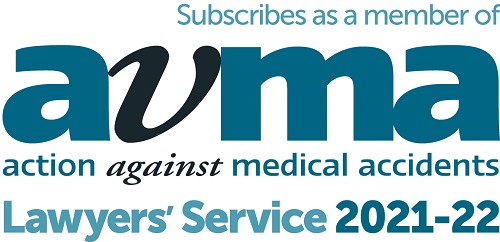A new ruling in the Supreme Court has confirmed an equal duty of care is expected from clerical staff as medical staff in the Accident and Emergency (A&E) department, following a Claimant suffering long-term brain damage as a result of misleading information.
The decision is expected to be the first of many clinical negligence cases where receptionists and administration staff are found to have the same duty of care as doctors and consultants from the time a patient arrives at A&E.
How Did the Darnley Case Arise?
The Darnley case arose after the Claimant (C) and his friend was advised of a 4-5 hour wait from reception staff at Mayday Hospital in Croydon.
This was communicated after it was understood C was suffering from a head injury after an assault, an injury that should be tended to within 30 minutes of arrival.
After 19 minutes in the waiting area, it was decided the friend would take C from the Hospital to the mother’s place where the Claimant’s condition deteriorated and an ambulance was called at 9:42pm.
After returning to the Hospital, a CT head scan revealed an extradural haematoma which led to C suffering a severe long term disabling brain injury… an injury that would have been prevented if C was seen within 30 minutes of arriving at A&E.
The Supreme Court found there is a duty of care required by reception staff in A&E which, on this occasion, wasn’t upheld when they provided misleading information around lengthy waiting times to C.
According to NHS Resolution, who handles claims against NHS bodies, it is the first time in England that a trust has been found negligent after a receptionist failed to give accurate information to a patient.
“Trusts therefore need to review their practices straight away, to ensure that visitors to A&E are provided with accurate and not misleading information about waiting times.
That might entail, as the court suggested, the use of leaflets or notices. Failure to do so might now incur a legal liability if a patient suffers detriment as a consequence.”
This new ruling is expected to set a new precedent, but has already raised questions around the duty of care that should be reasonably expected in the NHS.
Medical Negligence Solicitor Peter Michaelson, suggests hospitals may struggle to uphold the standards we now know is expected, given the well-documented lack of staffing within A&E departments.
“Unless hospitals adapt significantly, there is likely to be many more such potential situations which could arise,” Mr Canter said.
“In addition, the shortage of medically trained staff suggest that hospitals are actually more reliant than ever on non-medically trained staff to give information and advice.”
The Supreme Court Ruling Explained…
The Supreme Court took the view they were dealing with an established duty of care situation, namely, the duty of care owed by those running a casualty department in a hospital.
As that duty of care was owed by the Trust responsible for the casualty department, it was not appropriate to distinguish between medical and non-medical staff.
After a duty of care was established, the key question became whether there was a breach of that duty.
It was found that, although the receptionists didn’t need to provide precise waiting times, they needed to take reasonable care to avoid misleading information on likely availability of medical assistance.
The patient expects a degree of skill appropriate to the task and environment, which in this case, would include being provided information explaining the normal waiting time of 30 minutes.
It would be reasonable for a person to decide to leave if they believed there was a 4-5 hour wait for medical assistance.
There was therefore a breach of duty was found.
On causation, the Supreme Court found that if C had been told he would be seen within 30 minutes, then he would have remained at the hospital and been treated after the subsequent collapse immediately.
So to conclude C was owed a duty of care as soon as he entered the D hospital, D made its receptionists responsible for meeting this duty and the way C had been dealt with amounted to a breach of duty and the breach was causative of what happened. Cs actions did not amount to a break in the chain of causation.







